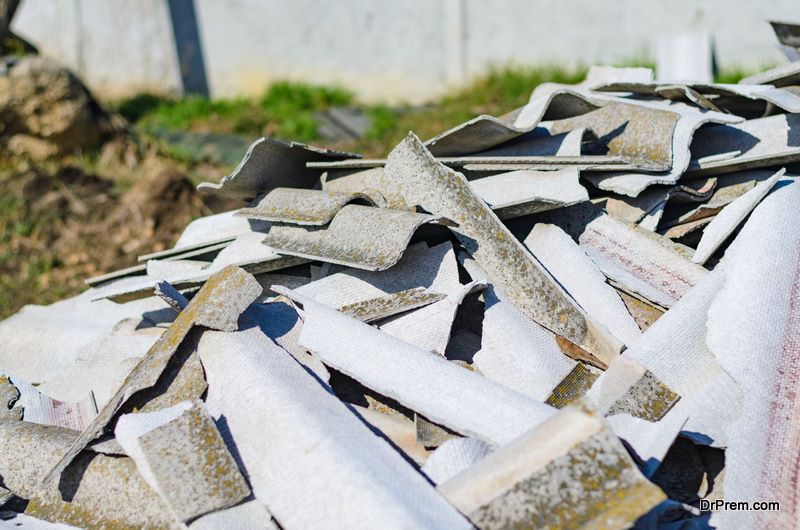Asbestos is a word that strikes fear in the hearts of many. Used decades ago in insulation, building materials, and fire retardants, asbestos was known for its durability and versatility. It’s now known to be carcinogenic and can wreak havoc on people exposed to it.
A naturally occurring mineral found in soil and rocks, asbestos was used in siding, roofing, floor tiles, and other building and home improvement materials until the 1980s. In fact, the U.S. Environmental Protection Agency introduced a partial ban in 1989 on some asbestos-containing products. It also banned new asbestos-containing products from getting into the marketplace.
If activities like mining, construction, or even home renovations release asbestos into the atmosphere or environment, the particles can taint the air, the soil, and the water. So, asbestos exposure presents not only risks to humans but also risks to the environment.
One of the more severe diseases resulting from prolonged asbestos exposure is a rare, aggressive, and deadly form of cancer known as mesothelioma. Symptoms of mesothelioma, which can take decades to materialize, include difficulty swallowing, labored breathing, nausea, weight loss, persistent coughing, and fever. A mesothelioma diagnosis is dire since the odds of recovery are slim. But the sooner it’s diagnosed, the sooner tests and treatments can be conducted.
But how can you reduce your risks of getting such a disease? One obvious way is to avoid asbestos exposure. What follows are some ways you can lessen your odds of encountering it.
1. Leave Certain Home Reno Projects to the Pros
If you plan to do home renovation work like changing the roofing system, replacing the siding, or adding more insulation behind the walls or in the attic, understand the risks.
Remember that some materials used in such applications decades ago contained asbestos. So, if your home hasn’t had any work done for a long time, asbestos might be present in some materials. You don’t want to interact with materials containing asbestos since this can cause fibers to become airborne and potentially lead to severe health problems down the road.
It might make sense to leave home renovation projects to the professionals. Experts will know how to go about safely removing potentially contaminated materials and disposing of them in a safe and environmentally safe manner.
2. Understand Potential Risks Around You
While you don’t want to get paranoid, knowing potential asbestos risks is vital. You need to familiarize yourself with things, some of which you might have in your own home or at your place of employment, that could expose you to asbestos. According to one source, things around your residence that may contain asbestos include the following:
- Ceiling tiles
- Material applied to walls for soundproofing or decoration
- Vinyl floor tiles
- Blankets used to safeguard hot water pipes
- Textured paints and materials used to fill cracks or holes
- Insulation for furnaces and door gaskets
- Vehicle transmission parts and brakes
Asbestos isn’t something to take lightly. After learning about possible risks, you must find a service provider to safely remove any dangerous things from your home.
The good news is that even if asbestos is in your home, your health likely isn’t at risk unless you interact with the asbestos-containing material in a way that releases asbestos fibers. But if you want to get work done on your home, your best bet is to conduct an asbestos inspection beforehand. That way, you can learn if there are any risks for asbestos exposure.
3. Be Mindful of Your Environment
Because asbestos is a naturally occurring mineral, it might be present not only in your home but also in your environment. Some practical tips to reduce possible asbestos exposure include the following:
- Wet the ground with a garden house before gardening or playing (since water can prevent asbestos from getting airborne)
- Drive slowly when traveling on unpaved roads
- Use asbestos-free soil to cover gardens that might have asbestos-containing soil or rocks
- Pave driveways or walkways that might have asbestos in the soil or rocks
- Keep doors and windows closed whenever construction activity is taking place nearby
These are some things you can do to reduce possible asbestos exposure. It usually takes prolonged exposure to asbestos to raise the risk level, but it goes without saying that avoiding exposure altogether and reducing the risks is the best strategy.
Article Submitted By Community Writer




